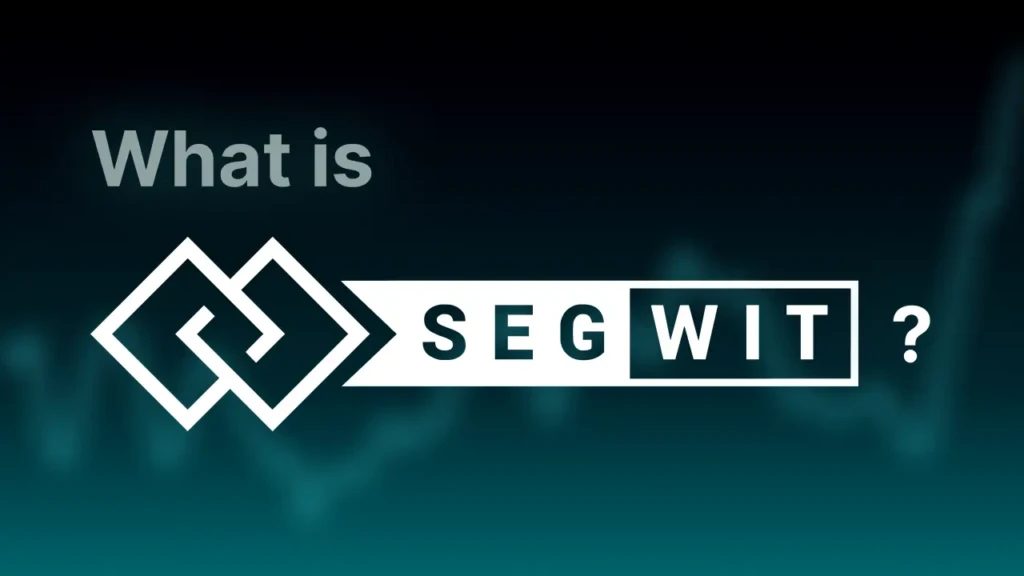What Does SegWit Mean?
What does SegWit mean in the world of cryptocurrency and blockchain technology? Short for Segregated Witness, SegWit is a critical Bitcoin protocol upgrade first activated in August 2017. It redefined how transaction data is stored and validated, improving scalability, reducing fees, and fixing long-standing vulnerabilities like transaction malleability. This investigative report explores SegWit’s origins, its technical mechanics, and its far-reaching impact on Bitcoin and the broader crypto ecosystem.
The Origins of SegWit: Why It Became Necessary
Bitcoin’s Growing Pains
By 2015, Bitcoin was facing a crisis. Blocks filled quickly, transaction fees spiked, and confirmations slowed. Developers debated how to scale the network without undermining its decentralized principles. SegWit emerged as a solution proposed by Bitcoin Core developer Pieter Wuille.
The SegWit Proposal
Formally introduced as Bitcoin Improvement Proposal (BIP) 141, SegWit separated—or “segregated”—the witness data (digital signatures) from the transaction’s main block. This clever design effectively increased block capacity without breaking the existing protocol.
Bitcoin.org offers the original BIP documentation, outlining the technical blueprint that would later reshape Bitcoin’s scalability debate.
How SegWit Works
Segregating the Witness
Every Bitcoin transaction includes inputs, outputs, and digital signatures (witness data). Traditionally, these signatures occupied up to 60% of a block’s space. SegWit moves this signature data into a parallel structure, outside the base block.
Block Weight, Not Block Size
Instead of a strict 1 MB limit, SegWit introduces a “block weight” metric, allowing an effective capacity of up to 4 MB. This innovation enables more transactions per block, lowering fees and improving throughput.
Eliminating Transaction Malleability
Before SegWit, minor changes to a transaction’s signature could alter its unique ID, complicating second-layer solutions like the Lightning Network. By separating signatures, SegWit closes this loophole, making advanced payment channels viable.
Adoption and Market Impact
Early Resistance
Despite its technical merits, SegWit faced political resistance. Some miners preferred larger blocks via alternative proposals like Bitcoin Unlimited. The “block size war” culminated in the 2017 hard fork that created Bitcoin Cash.
Gradual Uptake
Once activated, SegWit adoption started slowly but gained momentum as major exchanges and wallet providers upgraded. Today, over 80% of Bitcoin transactions use SegWit, according to Glassnode.
Benefits of SegWit
Lower Fees
By increasing effective block capacity, SegWit reduces network congestion and transaction costs—critical for everyday users and institutional investors alike.
Lightning Network Enablement
SegWit paved the way for the Lightning Network, a second-layer protocol enabling near-instant micropayments. Without SegWit’s fix for transaction malleability, this scaling solution would not be feasible.
Enhanced Security
SegWit simplifies future upgrades and strengthens Bitcoin’s resistance to certain attacks, ensuring the network’s long-term resilience.
Challenges and Criticisms
Partial Adoption
Some critics argue that SegWit is only a temporary fix. Full-scale adoption requires wallets and exchanges to support the upgrade, and not all have made the switch.
Competing Visions
Hardline Bitcoin maximalists argue that on-chain scaling should rely solely on larger blocks, not architectural changes. This ideological divide continues to shape Bitcoin’s governance.
SegWit Beyond Bitcoin
While designed for Bitcoin, SegWit has inspired upgrades in other blockchain networks. Litecoin, for example, adopted SegWit months before Bitcoin, proving the concept’s cross-chain viability.
FAQ: What Does SegWit Mean?
What does SegWit mean for Bitcoin users?
SegWit means faster transactions and lower fees by increasing the effective block size and optimizing how data is stored.
What does SegWit mean for the Lightning Network?
SegWit makes the Lightning Network possible by eliminating transaction malleability, enabling secure off-chain payment channels.
What does SegWit mean for transaction fees?
SegWit lowers fees by allowing more transactions per block, reducing congestion and average costs.
What does SegWit mean for other cryptocurrencies?
For coins like Litecoin, SegWit means enhanced scalability and a model for future blockchain upgrades.
Forward-Looking Analysis
SegWit represents a landmark moment in Bitcoin’s history, demonstrating that decentralized networks can evolve without sacrificing security. Its widespread adoption supports second-layer solutions and keeps transaction fees manageable, even during market surges. As Bitcoin moves toward mass adoption, SegWit’s architectural improvements will remain a cornerstone, enabling innovations such as Taproot and more sophisticated smart contracts.
In the next decade, as transaction volumes grow and new scaling technologies emerge, SegWit’s design principles—efficient data handling and backward compatibility—are likely to inspire the next wave of blockchain protocol upgrades.

